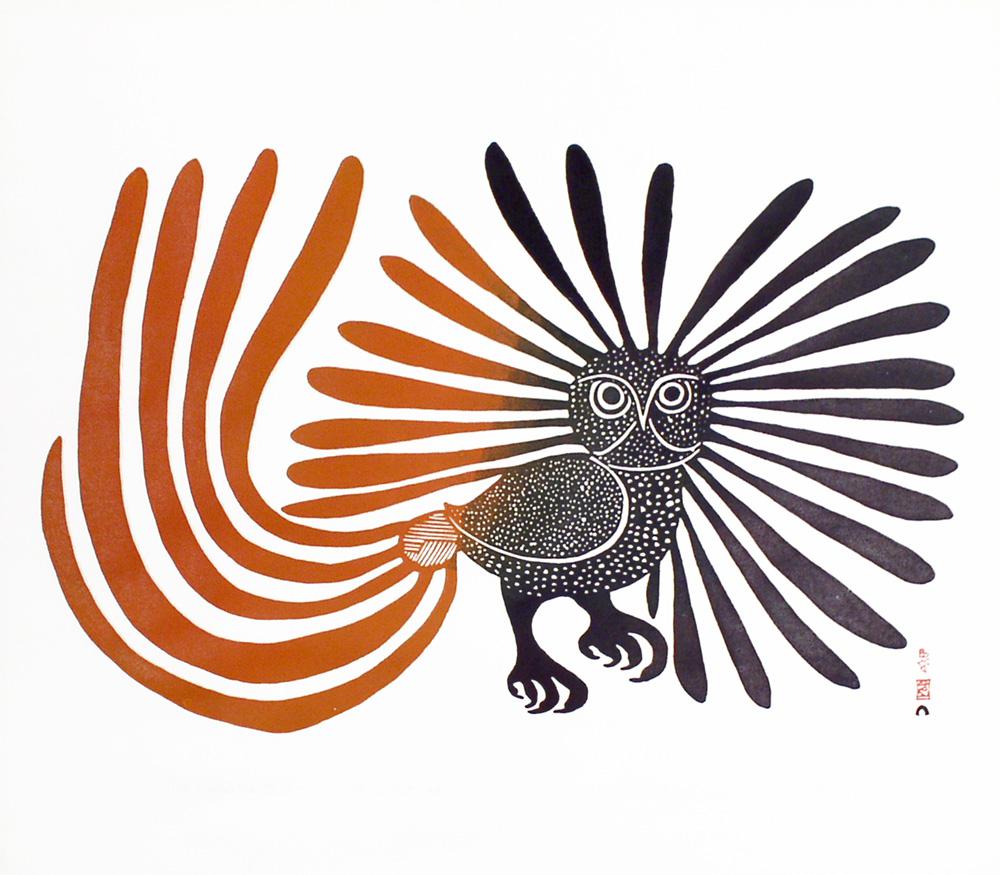One of the best known and most acclaimed Inuit artists of the last 50 years, Kenojuak Ashevak, is being remembered by many across Canada this week.
Yesterday, the artist died at her home in Cape Dorset due to complications relating to lung cancer. She was 85.
“She was a remarkable lady,” said Toronto dealer Pat Feheley of Feheley Fine Arts, who first met Ashevak in 1968. “She has been an inspiration for generations of artists.”
Ashevak began contributing to the famed Cape Dorset print collections in 1959, and, according to Feheley, she contributed to them every year since, right up until the fall 2012 release.
For decades, Ashevak worked out of the West Baffin Eskimo Co-operative studio, also known as the Kinngait studio, drawing alongside other renowned Inuit artists like Pitaloosie Saila, Mayoreak Ashoona, Melia Kelly, Papiara Tukiki and Napatchie Pootagook. Related prints and drawings were distributed by the co-op’s Toronto marketing office Dorset Fine Arts, and by many national and international dealers.
Along the way, Ashevak gained wide renown, having her art—notably 1960’s iconic The Enchanted Owl—featured on postage stamps multiple times, as well as on Canadian coins. She travelled to Japan (where she and her husband completed a mural for the 1970 World’s Fair), Europe and the United States; received honorary doctorates from Queen’s University and the University of Toronto; earned a star on Canada’s Walk of Fame; and, in 2008, received the Governor General’s Award in Visual and Media Arts.
In recent years, despite having to deal with illness, Ashevak didn’t just continue with the creation of prints—she worked from home, designing a stained-glass work in the mid-2000s and moving into a new medium, large-scale drawing, just two years ago.
“Her house is tiny, so I can’t imagine how she managed to work on those 4 foot by 4 foot or 6 foot by 8 foot drawings,” Cape Dorset print-shop manager Bill Ritchie recalls. “There was nothing to hold her down. She just absorbed it and figured out the material and she did it. Kenojuak was never one to back down from a challenge.”
Speaking with the Ottawa Citizen after Ashevak’s passing, National Gallery associate curator of indigenous art Christine Lalonde noted that the strong graphic quality of Ashevak’s work may have been tied to Inuit textile traditions.
“It’s often thought that women became such great graphic artists because they had already been working in a graphic sense when they were creating clothing.” Lalonde told the Citizen. She added, “Her images are very beautiful. They are great works of art that we recognize for their qualities of form and colour and line, but they’re also quite intelligent interpretations of that visual vocabulary that she knew.”
Ashevak was featured in recent exhibitions on important Inuit art, including “Inuit Modern” at the Art Gallery of Ontario in 2011 and “‘Truly Canadian’: Inuit Art and National Identity” at the Carleton University Art Gallery, which closed in 2012.
“I don’t know many people in Dorset who were born in snow houses and grew up that way anymore,” Ritchie says. “She may be the end of an era.”
Funeral arrangements are pending, and Toronto memorial is due to take place at some point in the future.









